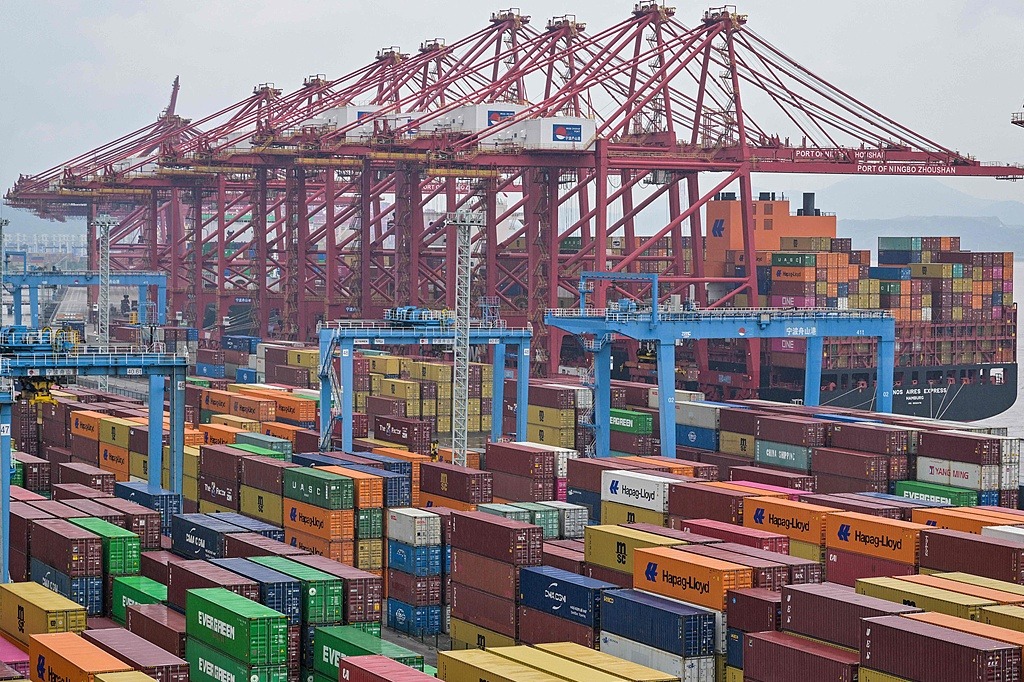Global supply chain key to economic development and efficiency

The novel coronavirus pandemic has exposed the vulnerability of the global supply chain. Yet it is imperative that all countries collectively address these vulnerabilities, instead of trying to replace the global supply chain with many regional and/or local supply chains, which could drastically reduce the efficiency of the global economy.
In economics, the division of labor is the separation of assigned tasks in any workplace. It helps divide the production process into different stages, enabling workers to focus on specific tasks and specialize in them. If workers concentrate on one small aspect of production, it will increase overall efficiency so long as sufficient volumes or quantities of goods are produced. Individuals, organizations and countries are endowed with or acquire specialized capabilities, and either form combinations or trade to take advantage of their own capabilities in addition to those of others. As such, the division of labor is the motive for trade and the source of economic independence.
The global supply chain, in turn, has been formed based on the international division of labor, which guarantees global economic efficiency.
On the one hand, many Western developed countries have shifted the manufacturing and processing of finished and semi-finished products to developing countries based on the international division of labor. On the other, multinational companies have outsourced some of their production aspects to companies in the Global South again based on the international division of labor.
This enables everyone in the supply chain, regardless of the country or region they are in, to best utilize their advantages, be it technology, capital or cheap labor. It also reduces production costs and maximizes efficiency.
But the coronavirus outbreak has severely disrupted the global supply chain. Many companies cannot get delivery of materials and industrial parts due to the logistical disruption or suspension of production by supplier companies, while others don't have orders to keep their production lines running.
The outbreak has also overwhelmed the global health systems while dramatically increasing the demand for medicines, including vitamins and antibiotics, and medical equipment. As national stockpiles quickly run out, many countries fear they may not be able to secure them from overseas suppliers, which has added to their anxiety over the already strained global medical supply chain.
As a result, some countries have proposed to replace the global supply chain with regional or local supply chains. Some have even offered to reimburse the companies that "reshore" (that is, bring back home) their production units to reduce their dependence on foreign suppliers and countries.
This is a particularly worrying trend, because the global supply chain is intricately interconnected and dependent on many countries based on their economic advantages, and any attempt to disintegrate it would result in consequences beyond our imagination.
Lest we forget, economic inefficiency, not overproduction, caused the Great Depression. If we try to replace the global supply chain with regional or local supply chains, we will be doing away with a highly efficient economic system in the hope of building a new one that could turn out to be disastrous, leading to an economic crisis worse than the Great Depression. Which could add to the economic woes many countries are already facing due to the pandemic and push the world into long-term economic depression.
Therefore, the right response would be to address the vulnerabilities of the global supply chain, in order to make it stronger and more efficient, not to try to disintegrate the global supply chain itself.
The author is an assistant professor at the School of Public Administration, Hunan University, and visiting researcher at the Tsinghua Belt and Road Institute. The views don't necessarily represent those of China Daily.
Today's Top News
- China reports 5.3% GDP growth in H1
- China handles 95 billion parcels in first half of year
- China, India vow to boost relationship
- Tips for expats to strike swifter friendships
- Digital initiative turns city into innovation hub
- AI enables sustainable energy transition






























